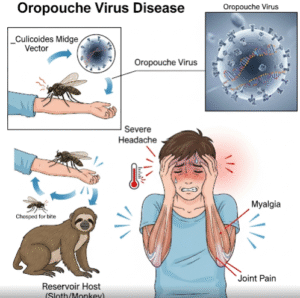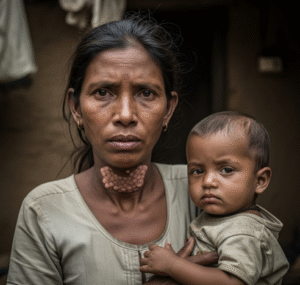Overview
Childhood obesity is a serious medical condition where a child has excess body fat that negatively affects their health and development. It has become a global public health concern, including in South Korea, due to rising rates caused by changes in lifestyle, eating habits, and reduced physical activity. Childhood obesity significantly increases the risk of developing type 2 diabetes, high blood pressure, heart disease, and emotional issues—both during youth and later in life.
Early detection and intervention are critical for long-term health outcomes.
What is Obesity in Children?
Obesity in children is determined by Body Mass Index (BMI)-for-age percentiles rather than adult BMI ranges. It is assessed using growth charts that compare a child’s weight to others of the same age and sex:
- Overweight: BMI ≥ 85th percentile and < 95th percentile
- Obese: BMI ≥ 95th percentile
The condition affects physical, emotional, and social development and may persist into adulthood if not managed early.
Symptoms
Symptoms of childhood obesity may include:
- Excess body fat, especially around the abdomen
- Rapid weight gain or growth curve acceleration
- Shortness of breath during activity
- Fatigue or low endurance
- Sleep problems or snoring (sleep apnea)
- Joint pain or discomfort
- Early puberty or menstrual irregularities in girls
- Low self-esteem, depression, or social withdrawal
Sometimes, the signs are subtle and require medical assessment to confirm.
Causes
Childhood obesity is typically caused by a combination of factors, rather than a single issue:
- Poor dietary habits (high intake of fast food, sugary drinks, processed snacks)
- Lack of physical activity
- Excessive screen time and sedentary behavior
- Family lifestyle patterns (shared eating and activity habits)
- Psychological factors (stress, boredom eating, reward-based feeding)
- Genetics and metabolism
- Hormonal or medical conditions (rare, such as hypothyroidism or Cushing’s syndrome)
Most often, obesity results from calories consumed exceeding calories burned over time.
Risk Factors
Certain conditions and environments raise the risk of childhood obesity:
- Family history of obesity
- Low physical activity or lack of access to exercise opportunities
- Unhealthy diet at home or school
- Emotional distress or trauma
- Sleep deprivation
- Low-income households with limited access to healthy food
- Urban environments with limited outdoor play areas
Complications
Obesity in children can cause both physical and psychological complications:
Physical complications:
- Type 2 diabetes
- High blood pressure and cholesterol
- Asthma and other respiratory problems
- Sleep apnea
- Fatty liver disease (NAFLD)
- Early puberty or menstrual issues
- Orthopedic problems (e.g., flat feet, hip pain)
Psychological and social complications:
- Low self-confidence and self-worth
- Social isolation or bullying
- Depression or anxiety
- Academic underachievement
Without early intervention, these effects may extend into adulthood.
Prevention
Preventing childhood obesity is more effective than treating it later. Key strategies include:
- Promoting healthy eating habits from early childhood
- Limiting sugary drinks, processed snacks, and fast food
- Encouraging physical activity (at least 60 minutes daily)
- Reducing screen time (limit to under 2 hours per day)
- Ensuring regular sleep schedules
- Eating meals together as a family
- Educating children and parents about nutrition and exercise
- Creating supportive environments at school and home
Prevention is a family-centered effort, not just an individual responsibility.
Treatment Options in Korea
South Korea offers comprehensive evaluation and management programs for childhood obesity through multidisciplinary teams, including pediatricians, dietitians, and psychologists.
1. Medical Evaluation
- Growth monitoring and BMI calculation
- Blood tests: glucose, lipids, liver enzymes
- Assessment for metabolic syndrome or hormonal disorders
- Family lifestyle assessment
2. Nutrition Counseling
- Individualized diet plans tailored to the child’s age, preferences, and nutritional needs
- Focus on portion control, balanced meals, and healthy snacking
- Parental involvement is key in successful dietary changes
3. Physical Activity Programs
- Fun, age-appropriate exercise routines to increase activity levels
- Encouragement of active play and reduction of sedentary behavior
- Group sports, dance, or martial arts to boost motivation
4. Behavioral Therapy
- Motivational counseling to build self-esteem and responsibility
- Psychological support for anxiety, depression, or emotional eating
- Family-focused behavior change strategies
5. In Severe Cases
- Medication: Used cautiously and only for adolescents with comorbidities
- Bariatric surgery: Rarely considered and only in extreme, life-threatening cases under strict criteria
6. Pediatric Obesity Clinics in Korea
Top hospitals offering childhood obesity programs include:
- Samsung Medical Center – Pediatric Obesity Clinic
- Asan Medical Center – Child Metabolic Health Center
- Seoul National University Children’s Hospital
- Severance Children’s Hospital (Yonsei University)
- CHA University Medical Center – Family Health Clinic
These centers provide:
- Comprehensive care teams (pediatrics, nutrition, exercise science, mental health)
- Education for parents and schools
- Monitoring and follow-up to support long-term success
- English-speaking services for international families













